
4 minute read
World Food: Australia
A taste from the past
Native ingredients are all the rage in Australian dining. But Aboriginal and Torres Strait Islander people have been using them for over 65,000 years
Advertisement
Words Sarah Reid
“When I opened my first cafe, a customer said to me: ‘I didn’t know Indigenous people had a cuisine’,” says Torres Strait Islander chef Nornie Bero, whose second Melbourne eatery, Big Esso, recently opened in the city to rave reviews from critics. “We’re here to showcase that food is actually a really important part of our culture.”
From spicy pepperberry to tender wallaby meat, native ingredients have become an increasingly familiar sight on Australian menus over the past decade. Now a new generation of Indigenous chefs, including Bero, a Meriam woman, are making traditional Aboriginal and Torres Strait Islander dishes – once rarely available commercially – more accessible.
Indigenous cuisine marries seasonal, sustainably harvested endemic proteins with a mixture of Australia’s 6,500-odd documented native edible plants. But it isn’t so different to other, non-Indigenous styles of cooking that have developed here. Bero explains it is similar to modern Australian cuisine in that it incorporates influences from other cultures, such as the Macassans (Indonesian trepangers), who were trading with Aboriginal and Torres Strait Islander people as early as 1451.
“It’s part of our culture to embrace everyone, and our cuisine has evolved – and continues to evolve – from that,” says Bero, who has built a reputation for showcasing sustainable native produce in dishes that interpret traditional recipes and flavours for the modern palate. “Kangaroo meat, for example, lends well to tartare,” she says. “I serve it with taro chips, incorporating the root vegetables I grew up with.”

Rising stars
Ingredients that were staples of Indigenous cooking have seen a mainstream renaissance in Australia, prompted by fresh interest in sustainable food and an abundance of farmers’ markets, as well as the emergence of restaurants run by up-and-coming Aboriginal and Torres Strait Islander chefs, such as Nornie Bero (pictured), who draw inspiration from their cultural and culinary heritage
5 DISHES TO TRY (AND WHERE TO SAMPLE THEM)
1Damper
A 65,000-year-old seed-grinding stone found in the Northern Territory indicates that Aboriginal people were baking bread tens of throusands of years before the ancient Egyptians. Traditionally made with flour harvested from the seeds of native grasses and other crops, then cooked on hot coals, the rustic bread known as "damper" was later popularised by drovers (following the introduction of wheat flour), as it could be carried on long journeys without spoiling. Commonly served on Aboriginal tours, and also at mod-Oz restaurants, it is now often made with wheat flour, with wattleseed mixed into the dough.
2Namas
A light and refreshing cevichelike dish made from freshly caught local fish cured in a fragrant citrus and coconut cream mixture, namas was born out of the Torres Strait’s pearling era, which attracted a wave of Japanese emigrants from the late 1800s onwards, who would consume fish raw as sashimi. A popular starter in the Torres Strait Islands, namas also features on Big Esso’s current menu.
3Paperbark fish
Cooking a whole white fish wrapped in paperbark – a type of melaleuca plant found north of Sydney – infuses the flesh with a deliciously smoky flavour. Traditionally cooked in a ground oven by Aboriginal communities in northern Australia, this fish dish is now found on modern restaurant menus across the country and is typically flavoured with Indigenous herbs such as native thyme, lemon myrtle and saltbush.
4Kangaroo
Lean, tasty and sustainable, kangaroo meat is still one of the most important proteins for Aboriginal communities. Traditionally, the entire animal would be gutted and placed on hot coals (or in a ground oven) to cook slowly, which helps to tenderise the muscly tail, a delicacy. Today, kangaroo – available at Australian supermarkets – is eaten in everything from burgers to steaks. Just be mindful that its low fat content means it can dry out if cooked for too long.
5Steamed pipis
Endemic to Australia, pipis are small bivalve molluscs hand-harvested from intertidal zones from southern Queensland down to the beginning of the Great Australian Bight. A staple for coastal Aboriginal communities, pipis are traditionally steamed on hot coals and slurped straight out of the shell. They are commonly served in a broth (similar to mussels and cockles) infused with the likes of kelp and macadamia. Look out for pipi dishes on upscale bistro menus.
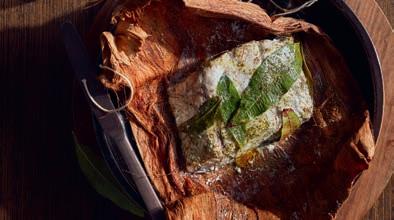
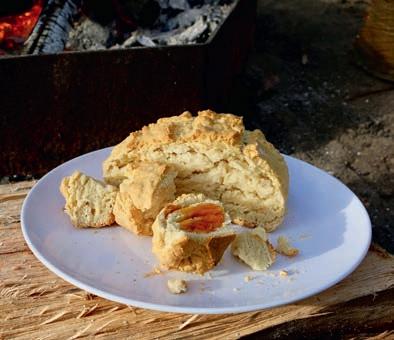
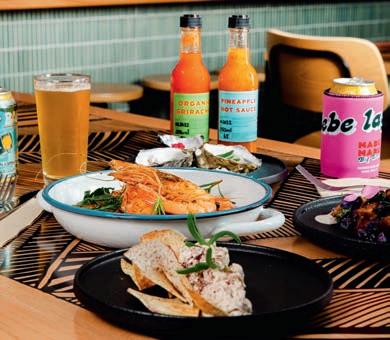
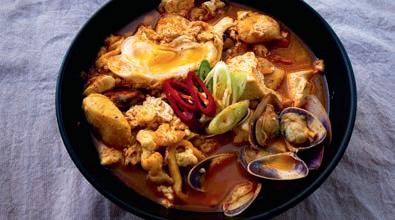
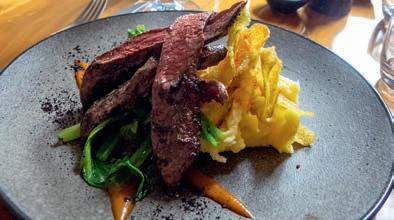
1
2 3
4
5
Alamy; Mabu Mabu; Shutterstock
TRY THIS...
Wardandi Bibbulmun woman and native foods expert Dale Tilbrook (daletilbrookexperiences.com.au) hosts bushtucker talks and tastings on her property in Western Australia’s Swan Valley, 30 minutes’ drive from central Perth. Tilbrook also offers a bush-tucker and wellbeing experience, which focuses on the nutritional value and healing properties of Australian native foods and medicinal plants, from Kakadu plum to native river mint.
WANDERLUST
RECOMMENDS
Warndu Mai (Good Food), by Damien Coulthard and Rebecca Sullivan (warndu.com; £24). This fully illustrated cookbook features more than 80 accessible recipes showcasing native foods.










